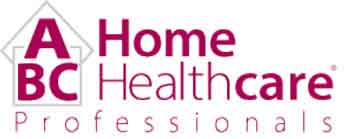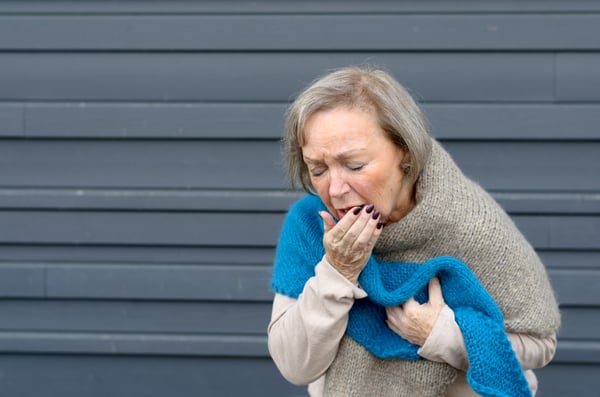Understanding COVID-19
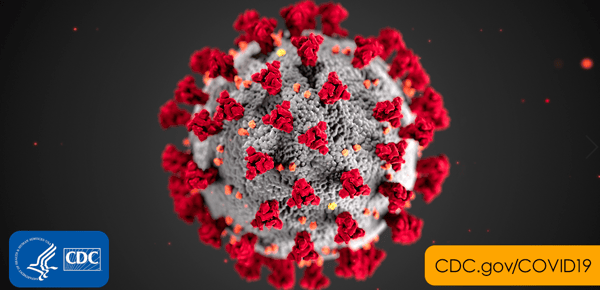
The information about the coronavirus disease 2019 (COVID-19) situation is changing rapidly. As a direct care worker, you are on the front lines, so it is vital that you stay informed.
This class offers a brief overview of what we know about COVID-19, how it spreads, strategies for preventing it from spreading, and how to care for someone who has the virus.
Try to Keep Calm
We are still learning more and more about the COVID-19 virus, including the mortality (death) rate. It’s important to stay calm and think clearly, as there is a lot of inaccurate information available regarding the virus.
Why Is COVID-19 Important?
On March 11, 2020, the World Health Organization (WHO) declared COVID-19 a global pandemic. A global pandemic is a new disease that has spread around the world. This means fully stopping the spread of the virus is not the goal (because it is already everywhere)—instead, we must focus on reducing how fast it spreads and how sick it makes people.1
Staying Up to Date
The COVID-19 situation is rapidly evolving. To stay informed with the latest information, consult the reliable sources listed below:
Your state and local health departments will have the latest information relevant to where you live. Use the resources below to locate the state and local health department websites:
You are expected to follow your agency’s policies and procedures and comply with all state and federal laws and regulations at all times.
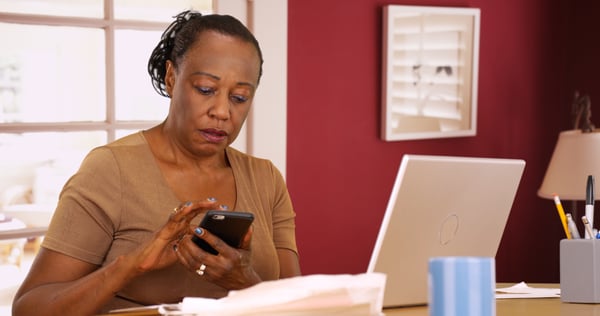
There is a lot we are still learning about COVID-19. New information is continuously developing, including guidance for direct care workers. Watch for updated emails and texts from ABC for updates on how the COVID-19 pandemic impacts your responsibilities.
What Is COVID-19 (Novel Coronavirus)?
COVID-19
A new virus was detected in late 2019 in Wuhan, China. On February 11, 2020, WHO announced an official name for the disease that is causing the current coronavirus outbreak. The name of the disease is coronavirus disease 2019 (COVID-19).2 This novel (new) coronavirus causes a respiratory (lung) infection. It has not previously been seen in humans.
Coronaviruses are not new. In fact, the common cold is a type of coronavirus. Some other coronaviruses, like SARS (Severe Acute Respiratory Syndrome) and MERS (Middle East Respiratory Syndrome), can cause serious illnesses.3
Symptoms of COVID-19
Symptoms of COVID-19 can appear one day to two weeks after exposure.
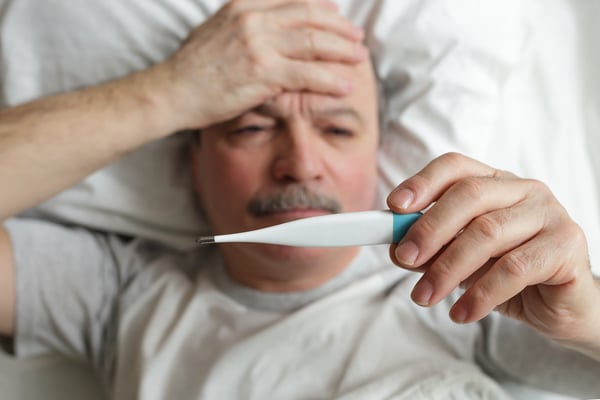
The most common symptoms of COVID-19 are fever and cough. Some people may have aches and pains, nasal congestion, runny nose, sore throat, or diarrhea.4 These symptoms are usually mild and begin gradually. If the person becomes very sick, they can have trouble breathing and/or get pneumonia.
Vulnerable Populations
We are learning more about COVID-19 every day. What we do know is that older adults are most at risk of getting the sickest and dying from COVID-19; the older a person is, the higher their risk of death. Younger people have a greater risk of dying if they have a chronic comorbid (existing and unrelated) illness such as heart disease, diabetes, or asthma.5
These groups are also most likely to get more sick more quickly. If you have a care recipient in one of these groups, be extra vigilant (alert) for any changes in their medical status. If you observe any changes in your care recipient’s status, notify your supervisor immediately. If the care recipient develops any worsening symptoms, such as greater difficult breathing or shortness of breath, call 911.
COVID-19 Mortality Rate
We don’t know how deadly COVID-19 is. The statistics vary depending on the source and the numbers are continually being updated. What we do know is that the virus is deadly and it becomes more deadly the older you are.
Related to COVID-19’s mortality rate, is the danger that hospitals will become overwhelmed by the number of patients who will need to be admitted and need ventilation to help support their breathing.
How COVID-19 Spreads
Community Spread
COVID-19 is spread through respiratory secretions (droplets from coughs and sneezes). The virus is transmitted from person to person in the community, and not just from people who have traveled to specific countries (such as China and Italy).
Since COVID-19 was first detected in Wuhan, China, many areas are seeing “community spread” of the virus. Community spread means people have been infected with the virus in a geographic area, including some people who are not sure how or where they became infected.6
How Contagious is COVID-19?
COVID-19 is more contagious than seasonal flu. If one person has the flu, they are likely to pass it on to at least one other person. If one person has COVID-19, they are likely to pass it on to at least two to three other people. So COVID-19 is more than twice as contagious as seasonal flu. By comparison, if one person has measles (a highly contagious disease), they are likely to pass it on to at least 18 others. It is still unknown when infected people can spread COVID-19. Most experts think that it may be caught even from people who have no or mild symptoms.7
Ways to Reduce the Spread of COVID-19
By slowing the spread of the virus, we increase the chance that everyone who needs care can get the care they need, and fewer people might end up becoming really sick or dying. In many parts of the United States where there are few reports of the COVID-19 virus, we really don’t know how widespread the virus is, because our country has not been testing widely. Even though the same number of people may become infected, we will be better able to take care of them if everyone practices social distancing and good hygiene.
Social Distancing
Social distancing means deliberately (carefully) increasing the physical space between people to avoid spreading illness. This means avoiding places where people meet or gather; avoiding local public transportation (such as buses, the subway, taxis, and rideshares), if possible; and maintaining distance (approximately 6 feet or 2 meters) from others.8 Since most experts think COVID-19 may be caught even from people who have no or mild symptoms, social distancing is especially important for reducing the spread of COVID-19.9

The expectation is that by practicing social distancing, we can reduce the daily number of cases of COVID-19. That is why the authorities have suggested closing schools and canceling sporting events, unnecessary travel, and visits to nursing homes. The danger is that, without social distancing, the health care system will have more patients at one time than can be taken care of reasonably and safely.
Travel Recommendations and Restrictions
The CDC maintains a list of general travel recommendations and international travel restrictions to help reduce the spread of COVID-19. Visit the CDC’s website for up-to-date information.
Other Measures
In addition to social distancing, public health experts recommend other tactics to limit the spread of infectious diseases. These tools are quarantine and isolation.
Quarantine
Quarantine separates and restricts the movement of well people who were exposed to a contagious disease to see if they become sick.
Self-quarantine is appropriate for people who have been exposed to the new coronavirus and who are at risk for coming down with COVID-19. Health experts recommend self-quarantine for 14 days.
Self-quarantine is recommended for people who have recently returned from traveling to a part of the world where COVID-19 is spreading rapidly or those who have knowingly been exposed to an infected person.
Self-quarantine involves:
- Using good hygiene and washing hands frequently
- Not sharing things like towels and utensils
- Staying at home
- Not having visitors
- Staying at least 6 feet away from other people in the household
If a person has no symptoms at the end of the self-quarantine period has ended, they should follow their health care provider’s instructions on how to return to a normal routine.10
Isolation
Isolation is used to separate ill persons who have a communicable disease from those who are healthy.11 For people who are confirmed to have COVID-19, isolation is appropriate. Isolation is a health care term that means keeping people who are infected with a contagious illness away from those who are not infected. Isolation can take place at home or at a hospital or care facility.12
Good Hygiene
Everyday preventive actions will help reduce the spread of COVID-19.
Hand Hygiene
Practice appropriate hand hygiene on a regular basis. This means washing hands frequently, with soap and water, for at least 20 seconds. When soap and running water are unavailable, use a hand sanitizer with at least 60% alcohol. Always wash hands before and after providing personal care.
View the video to learn the appropriate technique for washing your hands.
Use of Personal Protective Equipment (PPE)
You should always wear appropriate PPE when providing care. Barrier precautions, such as gloves and masks, create a barrier between you and germs.
Always wear single, disposable gloves when:
- Touching blood or bodily fluids
- You or the care recipient has broken areas of skin
- Assisting with personal care, such as bathing, oral care, and toileting
- Handling soiled clothing or linens
- Cleaning and disinfecting surfaces
View the video to learn about the appropriate use of gloves.
Cleaning and Disinfecting
The COVID-19 virus can stay in the air for multiple hours and on surfaces for days:
- Up to 3 hours in the air (that is, after someone sneezes)
- Up to 24 hours on cardboard
- Up to 2-3 days on plastic and stainless steel13
Clean and disinfect frequently touched surfaces and objects routinely. This includes tables, doorknobs, light switches, countertops, handles, desks, cell phones, keyboards, toilets, faucets, and sinks.
If a surface is dirty, clean it first with detergent or soap and water. Then disinfect it.
Wear disposable gloves when cleaning and disinfecting surfaces. Discard gloves after each cleaning. Wash your hands immediately after gloves are removed.
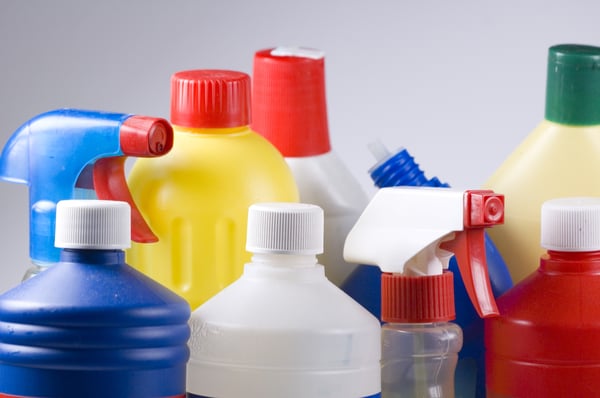
Products to Disinfect Surfaces
Use a household bleach solution, an alcohol solution with at least 70% alcohol, or an Environmental Protection Agency (EPA)-registered household disinfectant to eliminate COVID-19 from surfaces.
The EPA’s website lists disinfectants that are effective against the COVID-19 virus.
Follow the manufacturer’s instructions for products, including how much product to use, how to apply it, and how long it should be in contact with the surface. Note that often the disinfectant needs to be in contact with the surface for at least 10 minutes in order to be effective against the virus.14
Bleach Solutions
If needed, you can create a household disinfectant by diluting household bleach. To make a bleach solution, mix:
5 tablespoons (1/3 cup) bleach per 1 gallon of water or 4 teaspoons bleach per 1 quart of water
Important:
- Follow the manufacturer’s instructions for application and proper ventilation.
- Check to make sure the product is not past its expiration date. Expired household bleach will not be effective against coronaviruses when properly diluted.
- Never mix household bleach with ammonia or any other cleanser.15
Additional Hygiene Practices
These measures will also help prevent the spread of COVID-19:
- Avoid touching your eyes, nose, and mouth.
- Cover your cough or sneeze with a tissue (then throw the tissue in the trash) or use the inside of your elbow. Wash your hands immediately after you cough or sneeze.
- Avoid touching “high-touch” surfaces in public places. Use a tissue or your sleeve to cover your hand or finger if you must touch something.
- Avoid handshaking with people.
- Wash your hands after touching surfaces in public places.
Caring for Someone Infected with COVID-19
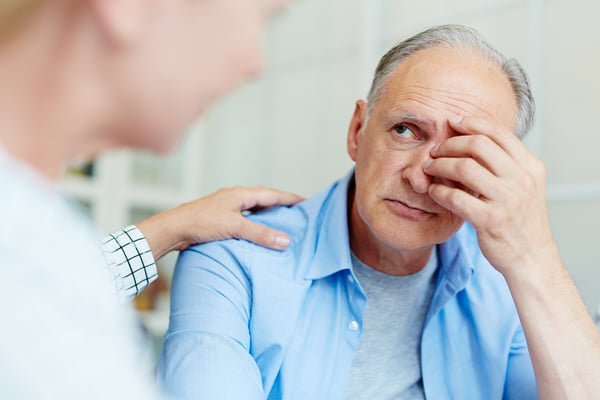
As more patients get discharged home from hospitals, you will very likely come into contact with someone who has or was exposed to COVID-19. As the number of people with the virus increases, hospitals will not be able to care for the number of patients who have only mild illness and do not require hospitalization. These individuals will need to be cared for in a home-care setting.
In Italy and China, which have had cases of COVID-19 longer than the United States has, there were too many people sick with the virus and not enough hospital beds and health care staff to take care of them. The United States is trying to avoid a repeat of that situation here.16
As a direct care worker in a non-health care setting, you may have close contact with a person undergoing testing for the virus or who has tested positive for COVID-19.
Close Contact
Close contact means:
- Being within approximately 6 feet (2 meters) of a person with COVID-19, or
- Having direct contact with the infectious secretions of a person with COVID-19 (for example, being coughed on).
Close contact can occur while caring for, living with, visiting, or sharing a health care waiting area or room with a person with a diagnosed case of COVID-19.17
Questions about Caring for Someone with COVID-19
You should always follow your agency’s policies when providing care. Your agency should be keeping up to date with the latest information with federal, state, and local public health authorities. If you have any questions about how to care for someone who has COVID-19, you should contact your supervisor.
Measures to Help Avoid Contracting COVID-19
All health care professionals, including direct care workers, are at a higher risk of getting COVID-19 because of the older and sicker population you care for. The measures below will help you to avoid contracting the virus while you care for someone who has COVID-19.
Practice Infection Control
The most important thing you can do is to practice good general infection control measures, including frequent proper handwashing and using PPE when indicated.
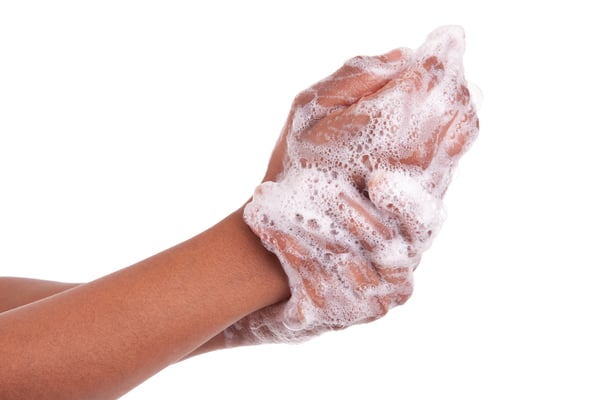
When caring for someone with COVID-19:
- Wash your hands often with soap and water for at least 20 seconds or use an alcohol-based hand sanitizer that contains 60 to 95% alcohol, covering all surfaces of your hands and rubbing them together until they feel dry.
- Avoid touching your eyes, nose, and mouth with unwashed hands.
- Clean and disinfect surfaces frequently.
- Wear a disposable facemask and gloves when you touch or have contact with the care recipient’s blood, stool, or body fluids, such as saliva, sputum, nasal mucus, vomit, urine. Ideally, put the mask on before entering the care recipient’s home.
- When removing PPE, first remove and dispose of gloves. Then, immediately clean your hands with soap and water or alcohol-based hand sanitizer. Next, remove and dispose of facemask, and immediately clean your hands again with soap and water or alcohol-based hand sanitizer. Ideally, remove PPE after leaving the care recipient’s home and dispose of it in the outdoor trash bin.
- Throw out disposable gloves after using them. Do not reuse them. Place used disposable gloves in a lined container before disposing of them with other household waste.18
- Under normal circumstances, masks should also not be reused. However, currently there are not enough masks available to follow standard practices of throwing away masks after they are used. Because of the limited supply of masks, you may have to reuse them. Check with your agency for specific policies and procedures around reusing masks and other PPE.19
Monitor Your Own Health
Call your health care provider right away if you develop symptoms suggestive of COVID-19 (such as fever or cough). Call the office and do NOT go to work.20
Keep the Care Recipient Isolated and Assist with Basic Needs
If you are caring for someone with COVID-19 who can be cared for at home, they should stay in home isolation as recommended by their health care provider, unless they need medical assistance. If they need to see a health care provider, be sure to call first before arriving in person.
The care recipient should stay in a specific room and away from other people in their home. Also, they should use a separate bathroom, if one is available.
Make sure that shared spaces in the home have good airflow, such as by an air conditioner or an opened window, weather permitting.
Prohibit visitors who do not have an essential need to be in the home.
The care recipient should remain in home isolation until they are no longer at risk of transmitting the virus to others. This decision should be made by their health care provider, possibly in consultation with state and local health departments.
You should help the care recipient with basic needs in the home and provide support for getting groceries, prescriptions, and other personal needs.21
Encourage the Care Recipient to Clean Their Hands Frequently
Make sure the care recipient washes their hands often with soap and water for at least 20 seconds. Handwashing is especially important after they blow their nose, cough, sneeze, or go to the bathroom, and before they or prepare food.
If soap and water are not readily available, they can use an alcohol-based hand sanitizer with at least 60% alcohol. Make sure they cover all surfaces of their hands and rub them together until they are dry.
Remind the care recipient to avoid touching their eyes, nose, and mouth with unwashed hands.
Care recipients should cover their mouth and nose with a tissue when they cough or sneeze and immediately wash their hands afterward. Make sure they throw used tissues in a lined trash can.22
Have the Care Recipient Wear a Facemask
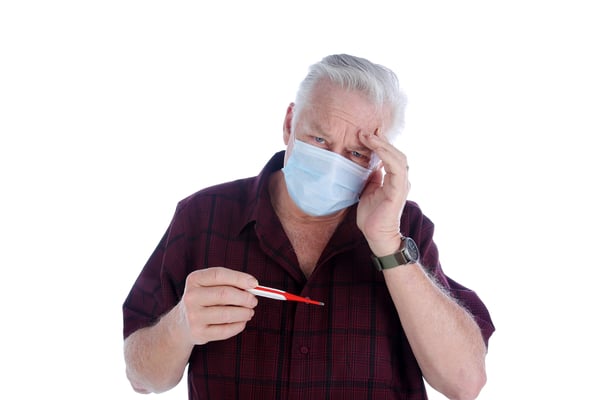
Whenever a care recipient with COVID-19 is around others, including you and other direct care workers, they should wear a facemask. This includes when they are in the same room or vehicle with you, when around pets, and at a health care provider’s office.
If the care recipient is unable to wear a facemask (for example, because it causes trouble breathing), you should wear a mask whenever you are in the same room.
Avoid Sharing Household Items
Disinfect All “High-Touch” Surfaces Regularly
Disinfect surfaces that are touched frequently, including counters, tabletops, doorknobs, bathroom fixtures, toilets, cell phones, keyboards, tablets, and bedside tables.
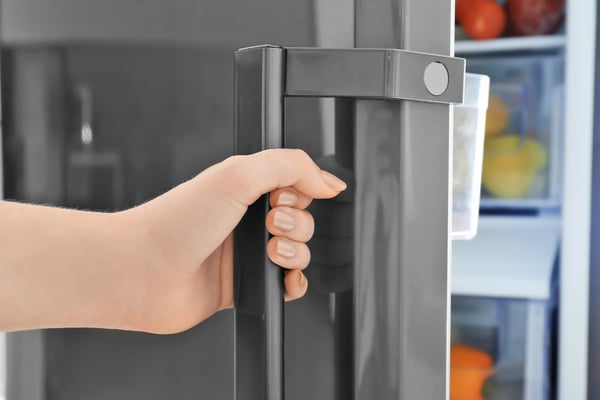
Clean and disinfect any surfaces that may have blood, stool, or body fluids on them.24
Wash Laundry Thoroughly
Immediately remove and wash clothes or bedding that have blood, stool, or body fluids on them, because they may contain the virus.
Wear disposable gloves while handling soiled items and keep soiled items away from your body.
Clean your hands (with soap and water or an alcohol-based hand sanitizer) immediately after removing your gloves.
Read and follow directions on labels of laundry or clothing items and detergent. In general, using a normal laundry detergent according to washing machine instructions and dry thoroughly using the warmest temperatures recommended on the clothing label.25
Protect Health Care Professionals and Others in the Community
- Emergency Personnel: If the care recipient has a medical emergency and you need to call 911, notify the dispatcher that the care recipient has, or is being evaluated for, COVID-19. If possible, put a facemask on the care recipient before emergency medical services arrive.26
- Health Care Providers, Office Staff, and Other Patients: When visiting a health care provider, the care recipient should put on a facemask before entering the building to protect the other people in the office or waiting room from getting infected or exposed to COVID-19.27
- Nursing Home Staff and Residents: Many facilities, including nursing homes, now limit visits from families and direct care workers in an attempt to limit the spread of the virus. If you are permitted to enter the building, you will likely be screened at the entrance, For example, your temperature may be taken and you may be asked about any recent respiratory symptoms.28
- Pets and Other Animals: It is recommended that people with COVID-19 limit contact with animals until more information is known about the virus, although there is currently no evidence that pets or other companion animals spread the COVID-19 virus. When possible, a caregiver or another member of the household should care for any animals while the care recipient is sick. If the care recipient must care for the pet while they are sick, they should wear a facemask, and wash their hands before and after they interact with pets.29
Protecting Yourself and Your Loved Ones
You cannot take care of your care recipients or your loved ones if you do not take care of yourself. Ways to protect yourself and others are discussed below.
- Practice Social Distancing: The CDC recommends avoiding close contact with people who are sick and putting distance (at least 6 feet) between yourself and those who are at risk of infection. Take appropriate precautions both when you are at work and at home to help prevent catching and spreading the virus.
- Practice Preventative Hygiene: Practice good hygiene, regular cleaning and disinfecting, and the other preventative measures discussed earlier. Taking these preventative actions both when you are at work and at home will help reduce the spread of COVID-19.
- Share the Facts: Make sure that you keep informed of the latest updates on the virus by consulting reliable sources on a regular basis. Help debunk myths and rumors by sharing factual information from sources like the CDC.
Protect Your Mental Health
The developments of the COVID-19 pandemic may be stressful for people and communities. Everyone reacts differently to stressful situations.
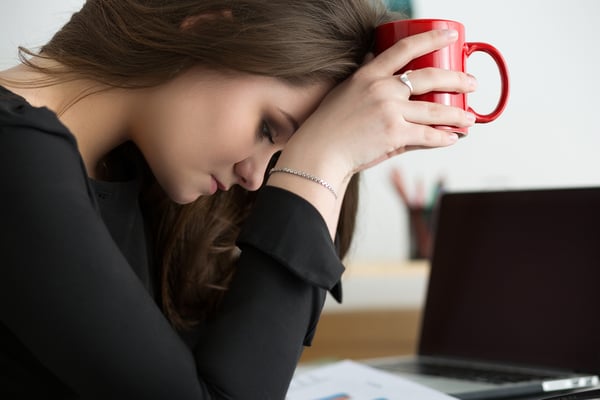
Here are some steps you can take help cope with stress and support yourself mentally and physically:
- Avoid excessive exposure to media coverage. Take breaks from watching, reading, or listening to news stories.
- Take care of your body. Take deep breaths, stretch, or meditate. Try to eat healthy, well-balanced meals, exercise regularly, get plenty of sleep, and avoid alcohol and drugs.
- Have a good support network. Share your concerns and how you are feeling with a friend or family member.
- Express yourself. Reduce stress by keeping a daily diary or a gratitude journal.
Caring for Your Loved Ones
Practice social distancing and good hygiene to protect your loved ones. Isolate yourself from those at higher risk (such as those who are older or have chronic illnesses) or wear a mask if isolation is not possible.
Check with your state and local department of health for resources, such as child care assistance, for essential personnel, like yourself and other health care professionals.
Now let’s put what you’ve learned to the test
To ensure you get credit for this online in-service please answer the questions found in the online COVID-19 Review (link below), fill in your name, email and phone # and hit submit.
Take the online COVID-19 review here
Thank you for your participation and for being a part of our ABC Caregiving Team.
